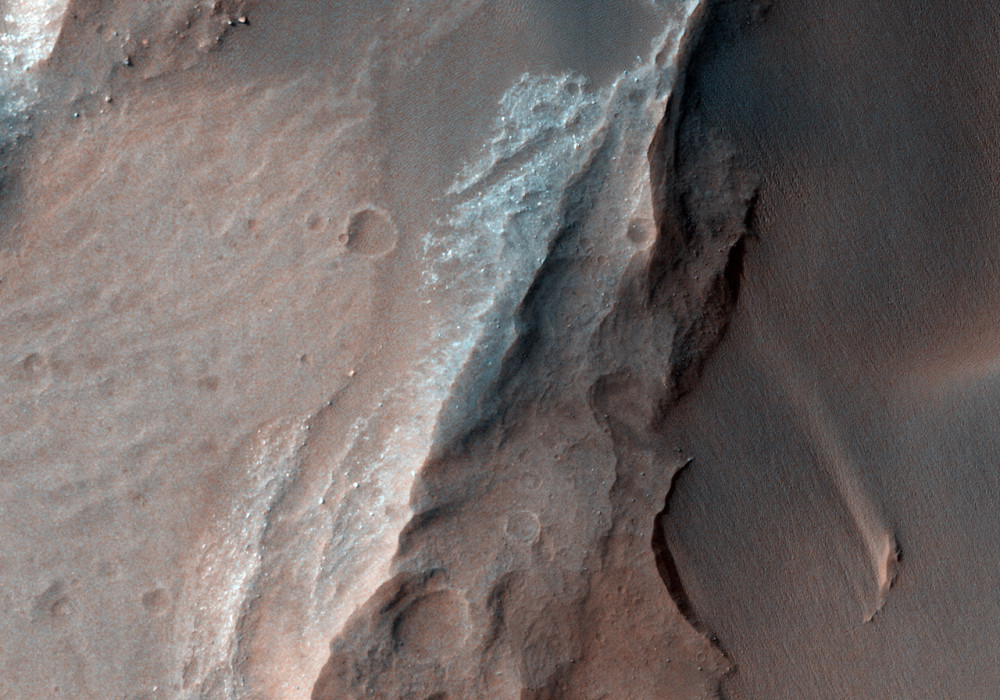This observation shows a landslide in the Coprates Chasma region of Valles Marineris that occurred when a large unstable area of rock broke away from the cliffs along the top of the image.
This mass of falling rock broke into many small pieces as it slid downhill and came to rest at the base of the cliff, forming the lobate (curved) mound in the lower part of the image.
The smooth textured ripples that are in the central part of the image are sand dunes. Sand dunes form as wind-blown particles roll across the surface and accumulate. Since the air on Mars is very thin, sand dunes take much longer to form on Mars than they do on Earth. The presence of large sand dunes, along with many small impact craters, on top of this landslide indicates that movement of the slide occurred a very long time ago, perhaps hundreds of millions of years.
This landslide was probably caused by a strong earthquake. A nearby meteorite impact may have generated an earthquake that was sufficiently strong to cause this landslide. Alternatively, movement along nearby faults may have triggered the landslide.
The Valles Marineris region is cut by many faults and in fact contains many more landslides such as this one. Some scientists believe that these landslides represent a record of earthquake activity in this area. Understanding the history of earthquake activity in the region may help scientists to predict the likelihood that such earthquakes occur on Mars today.
Written by: Chris Okubo (21 July 2010)
More info and image formats at http://hirise.lpl.arizona.edu/PSP_001970_1655
Image: NASA/JPL/University of Arizona
